ASUS Zenbook (UX21) Review
by Anand Lal Shimpi on October 22, 2011 8:00 PM ESTTablets have introduced a number of great features that are currently without equal in the notebook space. They are ultra light, extremely responsive, have tremendous battery life and are generally instant-on devices. Tablets however, aren't that great for being productive on, leaving good reason to still carry around a notebook. As both platforms continue to grow you'll see them learn from one another. Updates to the tablet experience in iOS 5 for example are clearly built around improving productivity. What about the notebook PC though? What is being done there to make it more tablet-like? This is where Intel's Ultrabook category of notebook PCs comes into play.
Ultrabooks today are simply ultra portable notebooks with a few requirements. They need to be thin, light, have a fast CPU (Sandy Bridge will do for now) and use some form of solid state storage. The SSD requirement helps OEMs guarantee that these Ultrabooks will have reasonable response time (application, boot and wake). Despite the tablet comparison, Ultrabooks aren't intended to go up against ARM based tablets. Intel will eventually have an Atom powered answer in that space, although we likely won't see it until Windows 8 ships.
Hardware specs alone aren't enough to bridge the tablet gap, which is why Intel views new features through software as a major part of the Ultrabook play. Intel expects Ultrabooks won't really go mainstream until sometime in late 2012-2013, so this first wave of notebooks are really nothing more than ultraportable PCs. If you look close enough, they may even look like MacBook Air clones. With the Ivy Bridge and Haswell updates, Intel is expecting to expand the impact of what Ultrabooks mean but today they are pretty much well designed notebooks with a fancy name.
That's not to say that Ultrabooks can't be impressive. In fact, impressive is probably the best way to describe ASUS' first Ultrabook: the Zenbook. Available in 11.6-inch and 13.3-inch varieties, the Zenbook focuses on user experience and aesthetics more than any previous ASUS notebook. ASUS sent us the 11-inch UX21E-DH71, but the full spec list is below:
| ASUS Zenbook Lineup | |||||||
| UX21E-DH52 | UX21E-DH71 | UX31E-DH52 | UX31E-DH53 | UX31E-DH72 | |||
| CPU | i5-2467M | i7-2677M | i5-2557M | i5-2557M | i7-2677M | ||
| OS | Windows 7 Home Premium 64-bit | ||||||
| Display | 11.6-inch 1366 x 768 | 13.3-inch 1600 x 900 | |||||
| Memory | 4GB DDR3 | ||||||
| Storage | 128GB 6Gbps SSD | 256GB 6Gbps SSD | |||||
| Wireless Connectivity | 802.11 b/g/n, Bluetooth 4.0 | ||||||
| Battery |
35Whr (5+ Hours) up to 7 day standby |
50Whr (7+ Hours) up to 10 day standby |
|||||
| Camera | 0.3MP | ||||||
| Audio | Bang and Olufsen ICEpower & ASUS SonicMaster Tech | ||||||
| I/O | 1 x USB 2, 1 x USB 3, 1x audio/mic, 1x microHDMI, 1x miniVGA | 1 x USB 2, 1 x USB 3, 1 x audio/mic, 1 x microHDMI, 1 x miniVGA, 1 x SD Card reader | |||||
| Dimensions | 11.7 x 7.7 x 0.11-0.67" | 12.8 x 8.8 x 0.11-0.71" | |||||
| Weight | 2.43 lbs | 2.86 lbs | |||||
| USA MSRP | $999 | $1199 | $1099 | $1349 | $1499 | ||
The Chassis
The Zenbook is built out of an all-aluminum chassis. ASUS starts with a block of aluminum and uses a CNC mill to carve out the chassis. The resulting chassis is extremely rigid and devoid of all perceivable flex. The only removable panel on the Zenbook is underneath the chassis, limiting the user's interaction with non-keyboard components that aren't built out of a single piece of metal.
The main chassis has a vertically brushed pattern on it while a circular brushing pattern is used on the display lid. the two parts of the Zenbook are also colored differently, with the main body featuring a platinum silver while the display uses a darker steel color.
In a nod to just how design focused ASUS was with the Zenbook, even the 10 screws on the bottom of the chassis feature the same brushed pattern as the rest of the chassis. ASUS elected to use torx bits instead of standard phillips heads to better match the industrial design of the system. While I appreciate the attention to detail I think I'd be happier if ASUS had stuck to standard screws.
Venting is obvious on the Zenbook, ASUS does nothing to hide it:
The effect is both elegant and functional. In using and benchmarking the system I definitely heard the fans spin up, but the chassis never got uncomfortably warm—even when looping Cinebench while typing this paragraph. Part of that is due to Intel's low voltage Sandy Bridge CPU, but part of it is because ASUS' design isn't embarassed to admit it needs air to cool the CPU.
The UX21's two speakers point downward and together produce a surprisingly decent sound. It's better than the 11-inch MacBook Air for sure.
ASUS includes a small lip on the display cover to aid in actually getting the machine open. Lifting the lid on any of these ultra slim machines isn't easy (as you're liable to lift the entire laptop instead of just the lid) but the lip does help a bit.
The display hinge is reasonably stiff. I'm able to hold the Zenbook up with the display perpendicular to the ground and not have the hinge give under the force of gravity. Picking up the Zenbook and shaking it a bit will allow the hinge to move as you'd expect, but overall it seems pretty resistent to unintended motion.
ASUS printed a pattern of very tiny hexagons on the surface of the hinge, giving the impression of perforation. On my sample one of those printed hexagons appeared slightly out of place, which in turn made it looked like my Zenbook had a clogged pore on its hinge. If you're the OCD type you better hope yours turns out perfectly.
With that minor exception I have to really commend ASUS on a job well done with the Zenbook's design. It's easily the most beautiful PC notebook I've ever laid hands (and eyes) on and even stands out more than a MacBook Air thanks to its brushed aluminum surface. Apple's design does look a bit more cohesive in my eyes, while the ASUS' Zenbook is more on the tastefully flashy side. Either way it's absolutely gorgeous and one of those things you just have to see to appreciate. I haven't been able to take a photo of the Zenbook that I believe adequately captures just how good this thing looks.
The design is quite functional as well. Thanks to the slim profile of the Zenbook and its diminutive weight, the UX21 is an absolute pleasure to carry. It's the pinnacle of portability without sacrificing the functionality of a keyboard. A tablet sure is nicer to carry, but the UX21 is much easier to type on.
The entire design is a bit more curvy than the current MacBook Air but it feels great in your hands. If you're used to Apple's aluminum the Zenbook may feel a bit tougher but the edge is something you get used to over time. After a few days of using it, the Zenbook UX21 felt just as comfortable to me as the MacBook Air.
I'm personally a fan of the 11-inch form factor as I believe, with Sandy Bridge, it delivers a great balance of portability and performance. If you do a lot of writing, it's a great companion.
USB 3.0: Supported
The Zenbook UX21 features two USB ports: one 2.0 port driven off of the QS67 chipset and one USB 3.0 port powered by a Fresco Logic FL1009 controller. Why not feature two USB 3.0 ports? The Fresco Logic controller supports two ports but the 11-inch chassis required that one port be allocated per side. The USB 2.0 port actually resides on a daughterboard on the other side of the system from the USB 3.0 controller. It looks like there wasn't a clean way to route the traces from the FL controller to that side of the system, which is why you get 1 x USB 2.0 and 1 x 3.0 port.
The performance advantage of USB 3.0 is beyond obvious. I measured large file transfer rate across both ports and saw the following results: 149MB/s on USB 3.0, 26MB/s on USB 2.0 port.
After being stuck in a number of situations where I was forced to copy files via USB stick, I definitely appreciate systems that come with USB 3.0 support.
No Backlit Keyboard
The Zenbook unfortunately doesn't ship with a backlit keyboard. I asked ASUS why it opted not to include one, worrying that the decision was somehow price-related. It turns out it was simply a time to market issue. Designing anything this slim is difficult and ASUS needed extra time to build a keyboard lighting system that would work in the Zenbook's chassis. In the interest of getting product out the door in early Q4, ASUS abandoned the idea of doing a backlit keyboard this generation. It's quite possible we'll see one next round with Ivy Bridge.
No SD Card Reader in the 11-inch Model
Just like Apple, ASUS only includes an SD card reader in the 13-inch UX31 and not the 11-inch UX21 models. Looking inside the chassis it's plainly obvious why:
The SD card reader would have to either occupy the area of one of the USB ports, or take out a chunk of area reserved for the integrated battery. Neither sacrifice seemed to make sense to ASUS and as a result the 11 doesn't include an SD card reader.
A Slick Looking Power Brick
While I can't quite pinpoint ASUS' source of inspiration for the Zenbook UX21's 45W power brick design, the end product looks great. Cable management is handled via a standard velcro strap and the power connector itself has an LED on it that glows orange when charging or green when fully charged. Unfortunately It also glows green when it's not connected, which can cause confusion if you plug it in but don't push the connector in all the way. Is it fully charged or just not fully connected? Guessing is half the fun!
The Relocated CoA: Microsoft Approved
In our earlier coverage I pointed out that ASUS had moved Microsoft's required Certificate of Authenticity to the power brick, something that's usually located on the system itself. Microsoft mandates the sticker's placement on the system, however there is a clean PC program an OEM can apply for in order to somewhat skirt the requirement. ASUS did apply for and was approved, allowing it the luxury of moving that CoA sticker to the power adapter. While it does improve the beauty of the machine, it also means that if you lose your power adapter you do lose your CoA.
Microsoft and Intel were also petitioned to allow greyscale versions of their respective product logos. ASUS' request was also approved, which is why you see less obnoxious Intel inside and Windows 7 stickers on the Zenbook.
Intel's Rapid Start & Smart Connect Technologies: Not Supported
At Computex earlier this year Intel announced two technologies that would be featured in some Ultrabooks starting this year: Rapid Start and Smart Connect.
Rapid Start sounds a lot like hibernate to NAND, promising 6 second start times from a very low power state. You can get even quicker start times from suspend to RAM, but you sacrifice standby battery life as you have to keep refreshing data stored in DRAM while your system is asleep. Rapid Start gets around this issue by apparently storing some, but not all, data in DRAM—reducing the burden on the battery while asleep, and reducing the amount of data that needs to be read off the SSD upon wakeup.
ASUS felt that even a 6 second start time was too long and instead went after reducing STR power consumption. The result is a sub 2 second wake time (from sleep, not full off) and a ~9 day standby time on a full charge. ASUS wouldn't detail exactly how it managed to increase STR battery life, just that it spent a lot of time studying what electrical components could be shut down to save power and implements a bunch of its own tricks that its competitors haven't seemed to figure out. The Apple comparison is inevitable as the MacBook Air is rated for much longer standby time; presumably the advantage there is largely OS X related.
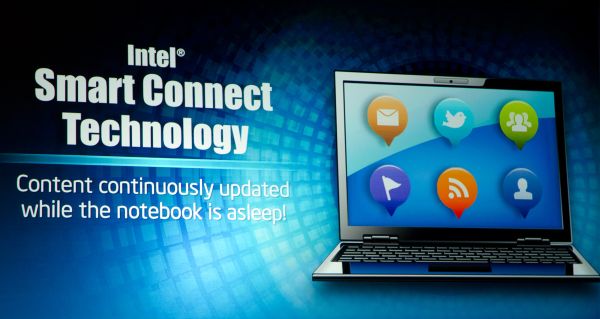
Intel's Smart Connect Technology is another Ultrabook feature that isn't present on the Zenbook. The idea behind this one is to have a layer of software that would periodically wake your system up while asleep and fetch all new updates (e.g. Twitter, Facebook, Emails). With Smart Connect enabled, when you actually do wake up your machine it should be far more up-to-date than it would've been normally. In order to enable Smart Connect you need Intel's WiFi solution. ASUS chose an Atheros WiFi card and as a result there's no Smart Connect here.
The ASUS Power Wizard Gadget
All Zenbooks ship with ASUS' PowerWiz Windows Gadget that gives you some battery life estimates. Based on internal ASUS test data and the current amount of battery remaining, the tool estimates how long your battery will last for various workloads. This data is all static in the sense that it is based on predetermined values and not your current workload.
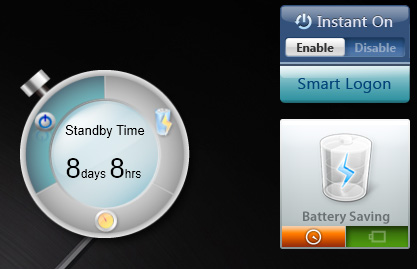
The standby battery life estimate however is a bit more accurate. Every time you put your Zenbook to sleep, ASUS monitors power usage for a full minute. Based on that power usage it then determines standby time given remaining battery capacity. Since standby power depends in part on what you have in memory, this method of estimation can significantly improve accuracy. Granted you'll always get a trailing estimate (e.g. this is how long your battery would last in stand by if you're doing exactly what you did last time you put it to sleep) but it's better than nothing I suppose.



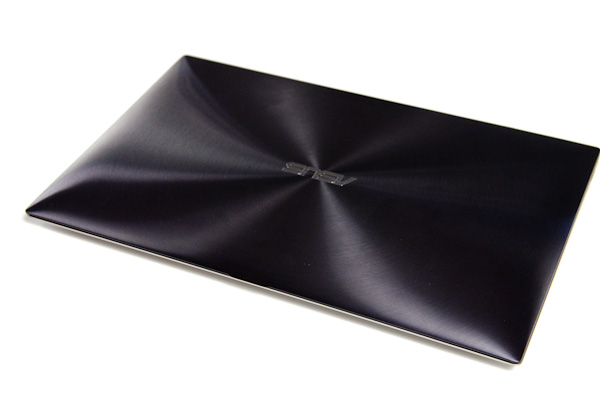
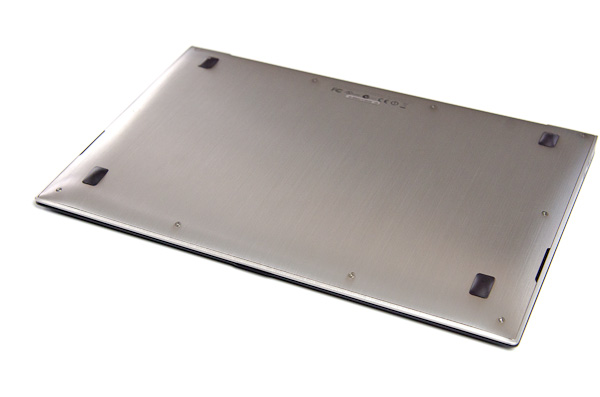

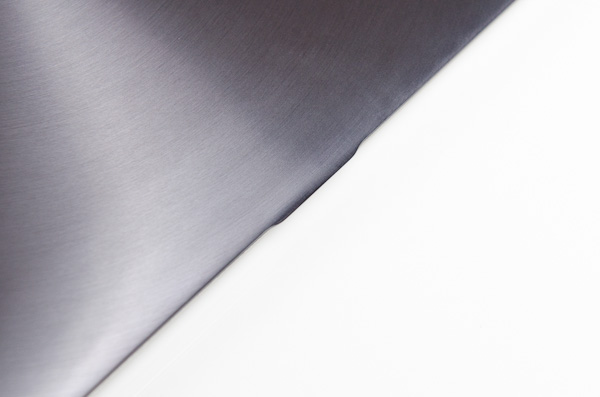
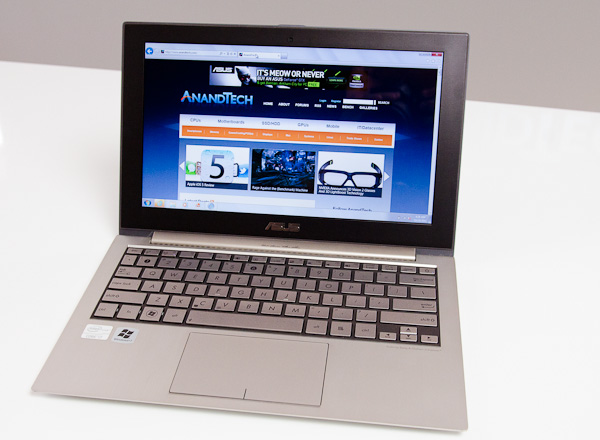






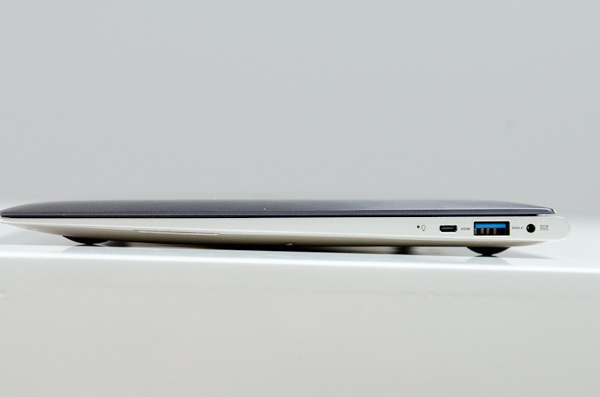

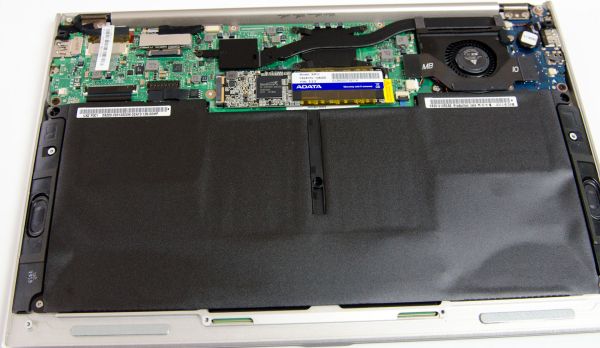
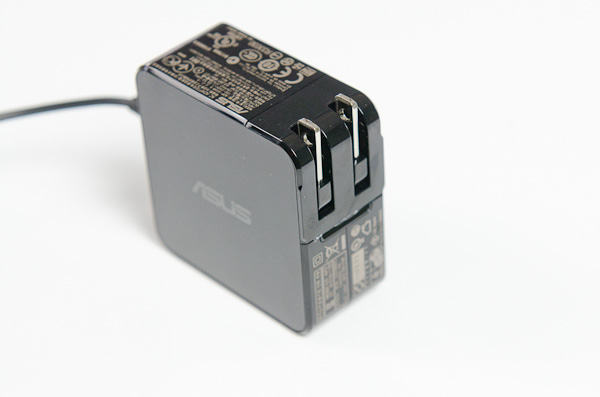

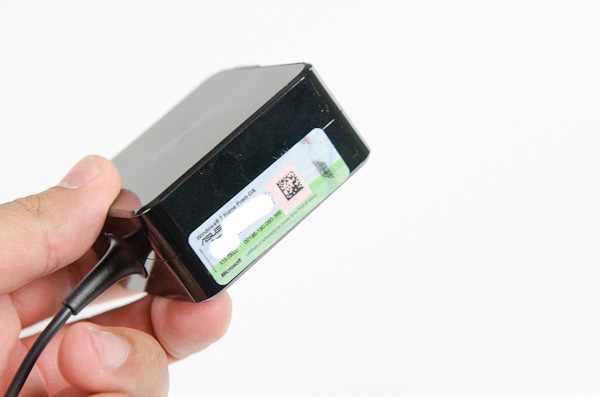









109 Comments
View All Comments
losonn - Sunday, October 30, 2011 - link
Any chance the UX31's 900p display is better? Any chance of reviewing the UX31 is the future?losonn - Sunday, October 30, 2011 - link
Any chance of an UX31 review? Is the screen on the larger model any better / worse than the UX21?cab2012 - Thursday, November 3, 2011 - link
As a designer this is getting increasing more pathetic. There are many configurations and designs that can be produced without stealing other designs from a competitor who product is widely known for its industrial design. I know there is a lot of copycats, but seriously copying the style of famous Apple transformer?Oh wait it is different, its BLACK. The whole thing looks like a MBA only thunderbolt-less, and crappier graphics. Who do they think they are fooling. Only the dumb customers stupid enough to buy one of these and IT does not even have a magsafe power adapter? Who in their right mind would buy a laptop without a magsafe adapter. As someone who has an owned a laptop that was yanked off a countertop by a running dog caught up in the power cord, I would find impossible to believe that a computer laptop company would make a laptop without a magsafe adapter. Absolutely idiotic.
"While I can't quite pinpoint ASUS' source of inspiration for the Zenbook UX21's 45W power brick design, the end product looks great. Cable management is handled via a standard velcro strap and the power connector itself has an LED on it that glows orange when charging or green when fully charged. "
seriously really? blatant copying. you mean just like the connector on all mac laptops for how many years now, 6-7? Only not magsafe.
"Unfortunately It also glows green when it's not connected, which can cause confusion if you plug it in but don't push the connector in all the way. Is it fully charged or just not fully connected? Guessing is half the fun!" copycats and half-assed copycats at that. IF you going to steal others ideas, because your designers are pathetic then at least have good engineers to make the product work, but I guess that is TOO much to ask from thieves.
netmann - Sunday, November 6, 2011 - link
Asus Zenbook UX31E-DH52 with 128 GB Adata SSD and Intel i7-2677M CPU is available in UK but not in US!!! Does anyone know the reason?Also the Asus Global site has Windows 7 Pro as one of Operating System choices, but not for US!
ianken - Thursday, November 10, 2011 - link
...I'm hitting it. Asus test lab failtrain now boarding on RMA track to newegg.RAGE.
reebsauce - Sunday, November 13, 2011 - link
Does anyone know if the processor/GPU can handle HD video editing without issues? For example, I use Sony Vegas on my desktop (Core i7 860 2.8GHz, ATI Radeon HD 5700) and I'm wondering if I'll be able to do the same with the Zenbook... if so, will I be able to perform other tasks while videos are processing (like browsing the Web)?KrisB - Tuesday, January 24, 2012 - link
Does the Zenbook have the capability to close the cover and not power off when an external monitor is connected?Mateusz - Sunday, April 8, 2012 - link
To begin with you pay more than 1100 euro for this laptop1) After 4 weeks of using the power socket breaks... laptop is shutting down randomly, due to problems with socket, and battery is not charging. I have to turn around the plug and play with it, to be able to use laptop
2) I tried to return it to shop, no its not possible to return it to shop after 6 weeks, but they can replace it, by sending it to Asus, it will take approximately 1 month because there is no real service in Netherlands, and they have to send it to France.
3) Website is sometimes down, and they don't answer phone calls
4) They don't give a fuck about Linux users, answer from service is "We don't support Linux platforms" in other words "Go fuck yourself, you already paid loser".
5) Its hard to open it, it gets dirty very easy, and LCD panel is moving too loosely, and its overheating (i7). I could probably add that auto-updating tool from Asus is crashing on Windows, and some of their software runs MS-DOS command line on startup...
So currently, since its may daily working tool, I cannot afford to be without laptop for 1 month, I am waiting till it'll break totally, and than maybe I will donate it to some homeless people.
MikeWoods - Monday, October 29, 2012 - link
I purchased 3 (2 for sales staff) Asus Zenbook first generation UX21E notebooks (1 I7 and 2 I5s) and have been very dissatisfied with all three. The keyboard problems are incredibly troublesome. It is difficult to type anything without missing letters or having the curser jump to other locations while typing.Would I buy again? I don't think so. Asus would have to replace all three laptops for me to ever consider buying Asus again. I do have an office full of desktop computers, all with ASUS motherboards and have been happy with the desktops.
To ASUS: if you would like to make good on these computers, you can contact me on any phone number you find at the bottom of http://www.mswoods.com.
Or, contact me by mail
Mike Woods
msWoods Real Estate, LLC
4111 Wythe Ln
Indianapolis, IN 46250